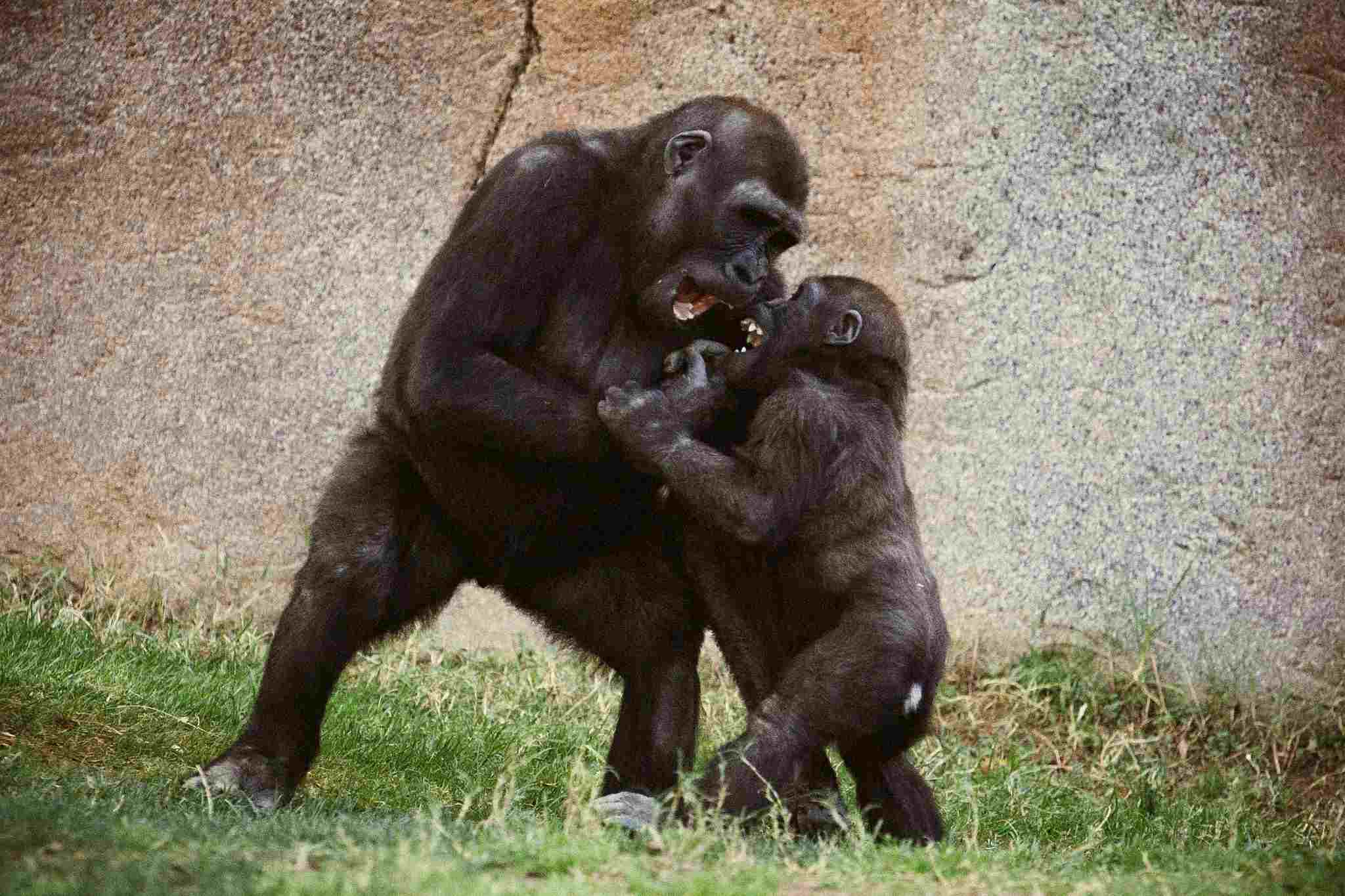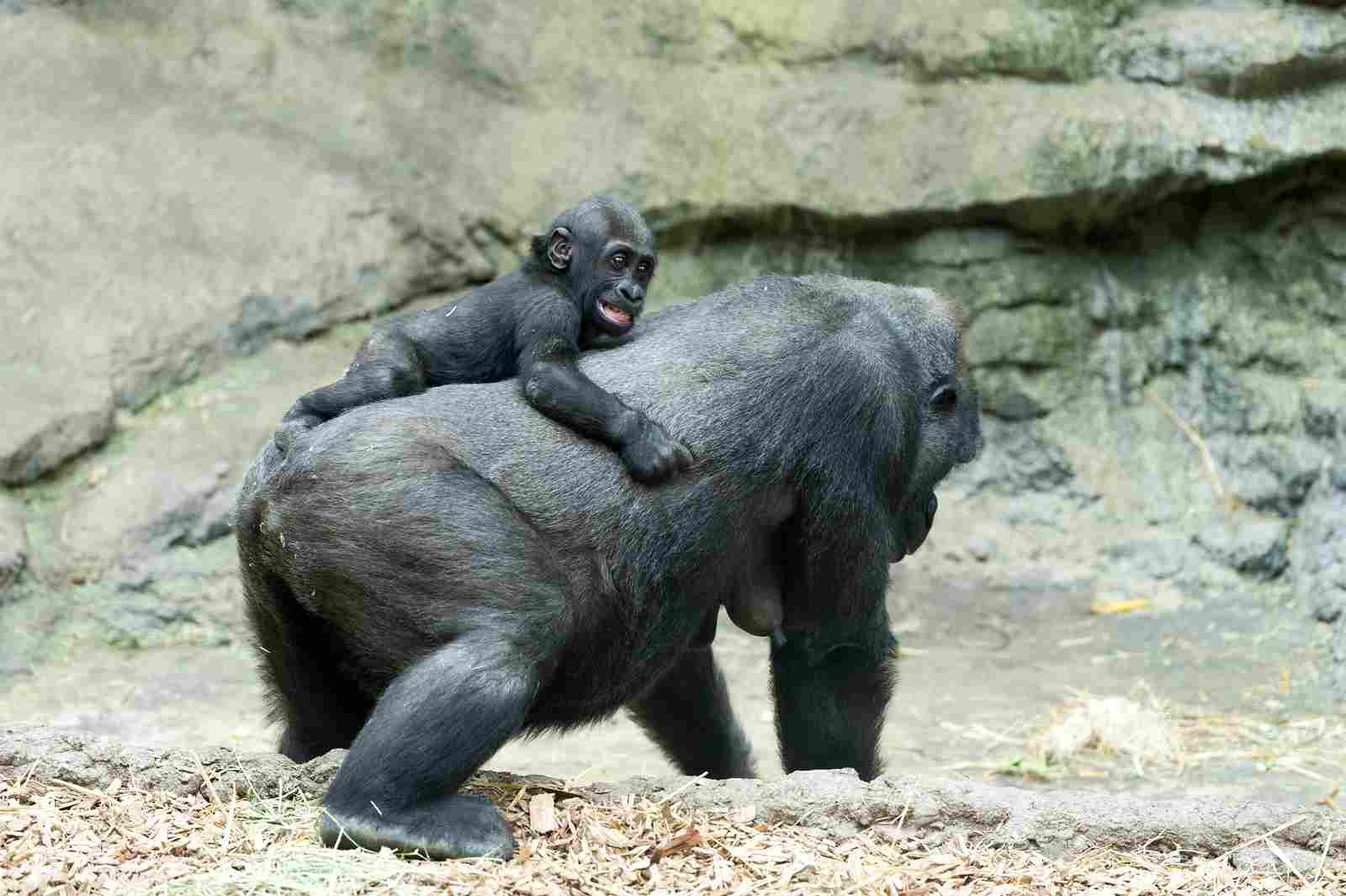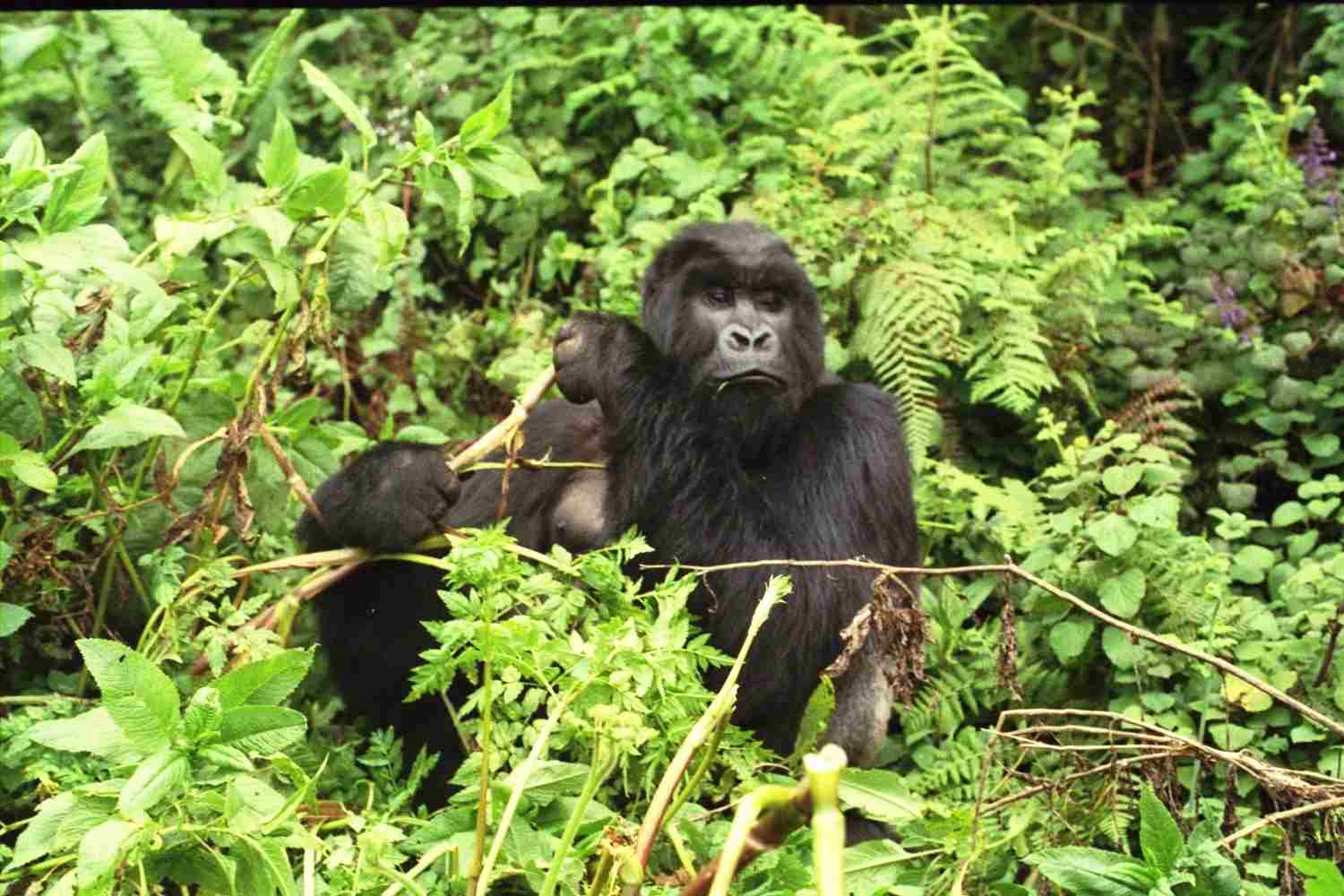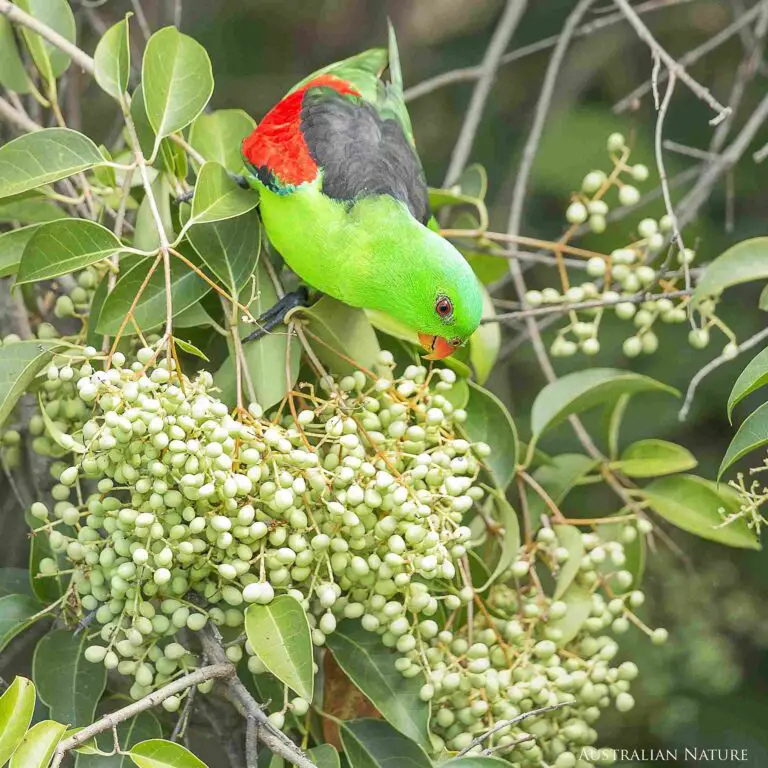Gorilla Vs Lion Who Would Win?: A Detailed Comparison
Gorillas and lions, both formidable creatures in their respective domains, showcase intriguing distinctions in biological and physical traits. While gorillas epitomize strength and inhabit dense forests, lions, with their own unique characteristics, reign over savannas with a combination of speed, aggressiveness, and predatory features.
This article discusses gorilla vs lion based on various factors, including taxonomy, appearance, size, weight, bite force, physical offensive and defensive advantages, speed, agility, overall physical capacity, habitat preferences, lifespan, feeding habits, social behavior, reproduction methods, parental behavior, proximity to human-inhabited areas, behavior toward humans, danger posed to humans, associated precautions, and conservation status.
Gorilla vs Lion: Who Will Win in a Fight/Physical Confrontation?
In a one-on-one confrontation, a lone lion is likely to prevail over a solitary gorilla due to its superior speed, heightened aggressiveness, and predatory features. However, it’s essential to recognize that a group of gorillas could pose a substantial threat to a lone lion, leveraging their collective strength and strategic cooperation.
Why a Lion Will Win a Single Gorilla in a Fight/Physical Confrontation:
I). Speed Advantage:
– Lions possess superior speed compared to gorillas, allowing them to maneuver swiftly and gain an upper hand in physical confrontations.
II). Aggressiveness Advantage:
– Marked by a more aggressive nature, lions outmatch gorillas in confrontational scenarios, showcasing a formidable demeanor that contributes to their success in one-on-one fights.
III). Predatory Features:
– Lions are equipped with specialized predatory features, including sharp claws and powerful jaws, enhancing their ability to subdue and overpower opponents.
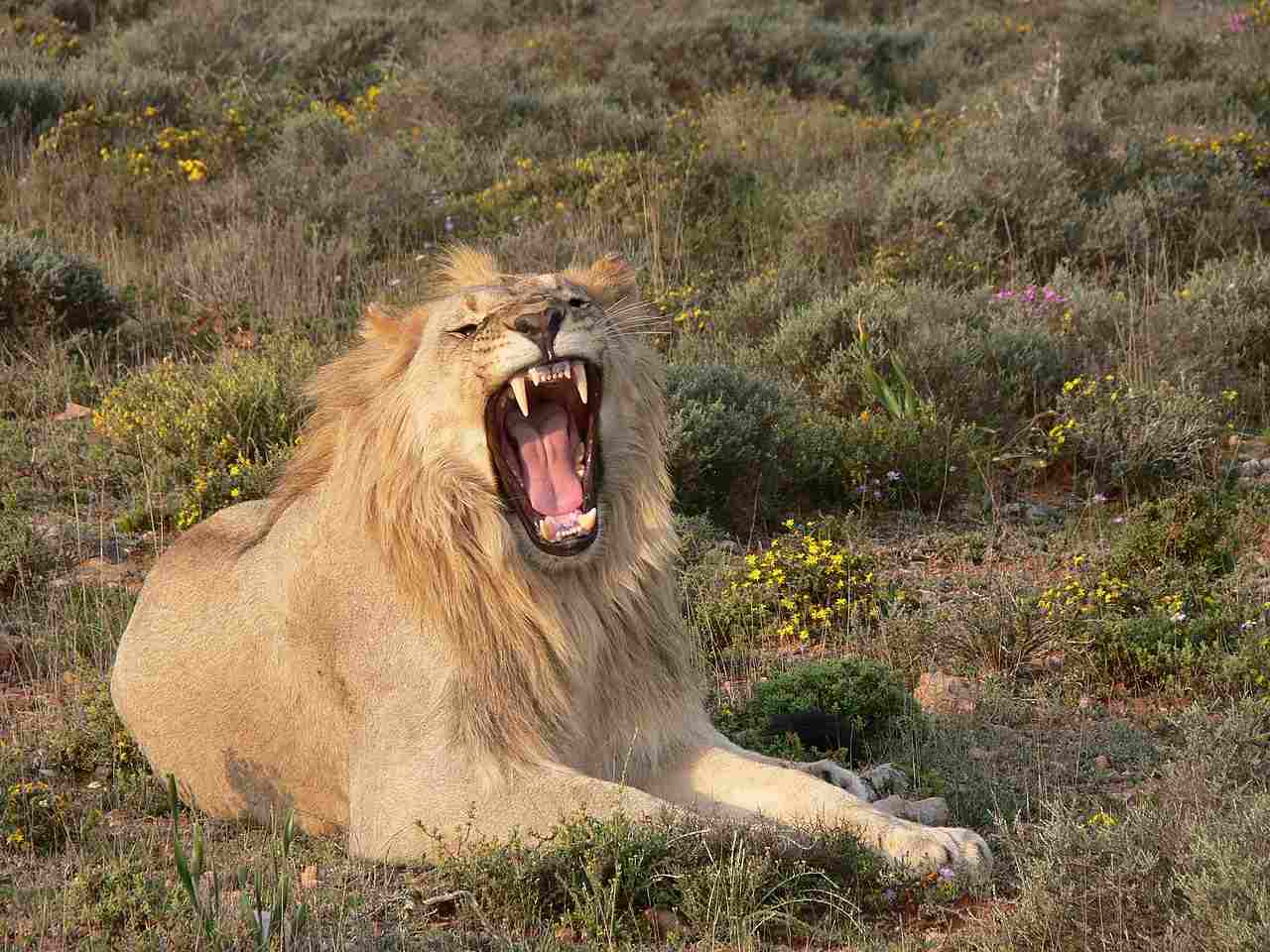
*Details of Comparison
| Aspect | Gorilla | Lion |
| Taxonomy | Hominidae, Gorilla genus |
Felidae, Panthera genus, Panthera leo species
|
| Appearance | Robust, dark coarse hair |
Slender, tawny fur, males with a mane
|
| Size | Taller, especially when upright |
Generally shorter, but overall length may surpass gorillas
|
| Weight | Males: 300-400 lbs, Females: Smaller |
Males: 330-500 lbs, Females: 260-400 lbs
|
| Bite Force | Around 1,300 psi | Around 600 psi |
| Offensive Advantages | Immense upper body strength |
Speed, agility, sharp claws and teeth
|
| Defensive Advantages | Strong, muscular build |
Cooperative defense within prides
|
| Speed | Not known for great speed |
Up to 50 mph in short bursts
|
| Agility | Nimble in climbing, deliberate movement |
Coordinated agility, swift hunting movements
|
| Overall Capacity | Robust strength for herbivorous diet |
Balance of strength and agility for hunting
|
| Habitat Preference(s) | Dense forests, mountainous areas |
Open grasslands, savannas, woodlands
|
| Tracks | Distinctive tracks with knuckle-walking |
Paw prints with retractable claws
|
| Lifespan | 35-40 years in the wild |
10-15 years in the wild
|
| Feeding | Herbivores, plant-based diet |
Carnivores, primarily meat diet
|
| Social Behavior | Cohesive groups with a dominant male |
Cooperative prides with multiple females
|
| Reproduction | Polygynous mating system, longer gestation |
Polygynous mating in prides, shorter gestation
|
| Parental Behavior | Strong maternal care, silverback protection |
Cooperative parenting, territorial defense
|
| Proximity to Humans | Inhabit remote areas, occasional encounters |
May inhabit areas close to human settlements
|
| Behavior Toward Humans | Generally shy, rare aggression |
Wary but potential danger, especially if habituated
|
| Danger to Humans | Not considered dangerous, rare attacks |
Can pose a danger, especially in close encounters
|
| Precautions | Respectful distance in wildlife viewing |
Caution necessary, adherence to safety guidelines
|
| Conservation Status | Varies, e.g., endangered and critically endangered |
Vulnerable, conservation focus on habitat loss and human-wildlife conflict
|
Key Points:
Similarities:
-
- Social Structures: Complex group dynamics for protection and cooperation.
- Parental Care: Mothers play significant roles; cooperative care within social groups.
- Ecological Importance: Both species contribute to ecosystem balance.
Differences:
-
- Taxonomy and Evolutionary Lineage: Different families and evolutionary paths.
- Habitat Preferences: Gorillas in dense forests, lions in open landscapes.
- Dietary Habits: Gorillas herbivores, lions carnivores.
- Mode of Reproduction: Gorillas polygynous with a silverback; lions in prides.
- Danger Posed to Humans: Lions potentially more dangerous due to predatory nature.
- Conservation Status: Varying statuses, with different conservation challenges.
1. Taxonomy:
Gorilla:
Family: Hominidae
Genus: Gorilla
Species: Gorilla beringei (Mountain Gorilla), Gorilla gorilla (Western Gorilla)
Subspecies: Gorilla beringei beringei (Eastern Gorilla), Gorilla beringei graueri (Eastern Lowland Gorilla)
Lion:
Family: Felidae
Genus: Panthera
Species: Panthera leo
Comparison: Gorillas and lions belong to different families and genera. Gorillas are part of the hominid family, sharing a closer evolutionary relationship with humans, while lions are felids, distant relatives to domestic cats.
Ecological Importance: Both species play crucial roles in their respective ecosystems. Gorillas contribute to forest regeneration by dispersing seeds through their feces, aiding in plant diversity. They are also considered flagship species, drawing attention to the conservation of their habitats.
Lions, as apex predators, help regulate prey populations, preventing overgrazing and maintaining a balance in the food chain. Their presence influences the behavior of herbivores, which in turn affects vegetation patterns and ecosystem structure.
2. Appearance:
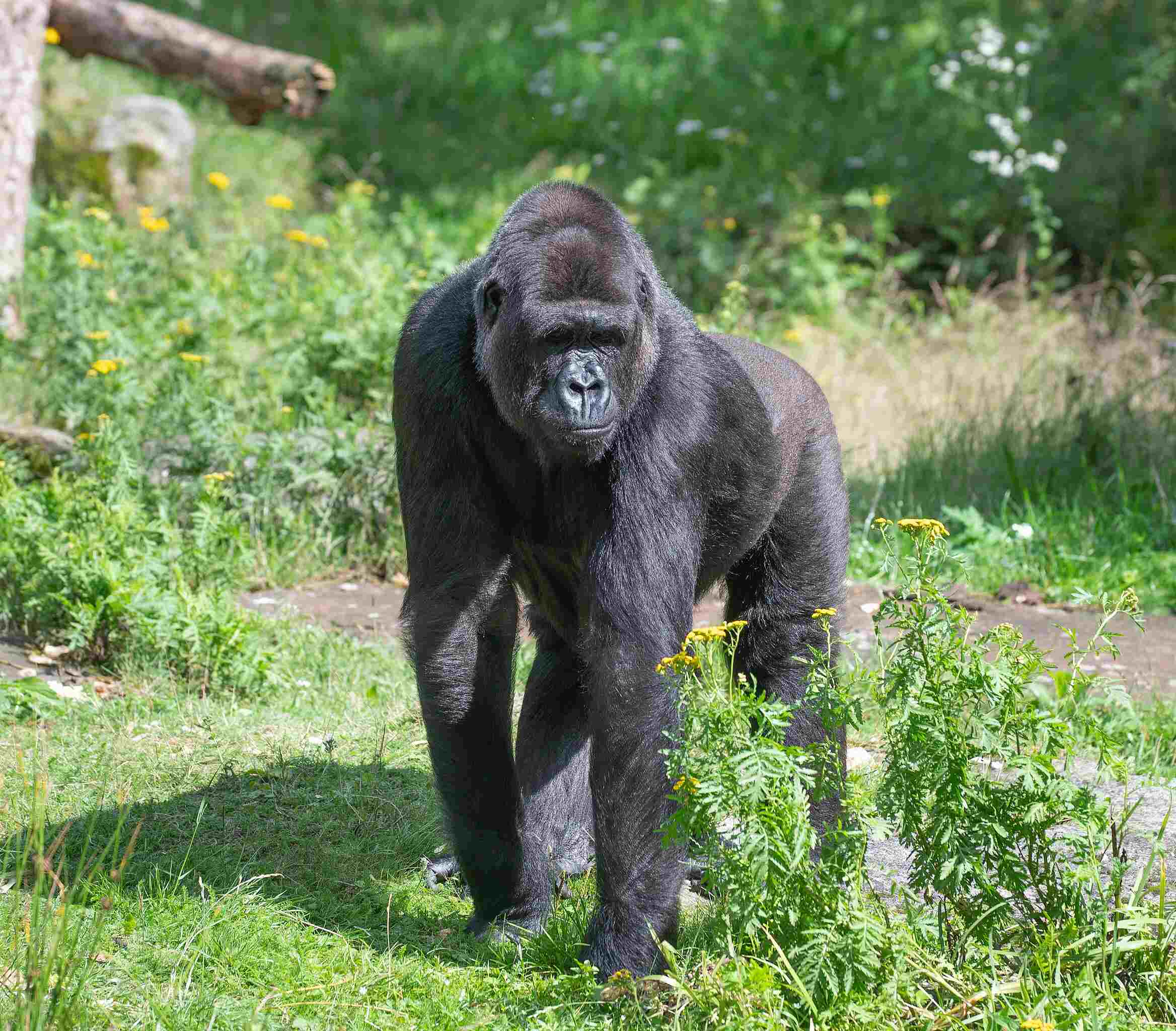
Gorilla:
Robust build with a large, muscular body.
Prominent sagittal crest on the skull, more noticeable in males.
Covered in dark, coarse hair.
Arms longer than legs, with opposable thumbs.
Lion:
Slender, powerful body designed for agility and speed.
Short fur, typically tawny in color, with a lighter underbelly.
Males exhibit a distinctive mane around the head and neck.
Females lack a prominent mane.
Comparison: Gorillas have a more robust and heavily built appearance, adapted for a primarily terrestrial lifestyle. Lions, with their streamlined bodies, are built for agility and speed, essential for hunting in open grasslands.
3. Size:
Gorilla:
Adult males: 5.6 to 5.9 feet (1.7 to 1.8 meters) when upright.
Adult females: Generally smaller than males.
Lion:
Head and body length: 4.5 to 6.5 feet (1.4 to 2 meters).
Tail length: About 2.3 to 3.5 feet (0.7 to 1.1 meters).
Comparison: Gorillas are generally taller, especially when standing upright, but lions may surpass gorillas in overall length when considering the body and tail.
4. Weight:
Gorilla:
Adult males: 300 to 400 pounds (136 to 181 kilograms).
Adult females: Roughly half the weight of males.
Lion:
Adult males: 330 to 500 pounds (150 to 227 kilograms).
Adult females: 260 to 400 pounds (118 to 181 kilograms).
Comparison: While there is some overlap in weight, male lions are often slightly heavier than male gorillas, but female gorillas may approach the weight of lionesses.
5. Bite Force:
Gorilla:
Gorillas have a powerful bite force, estimated to be around 1,300 pounds per square inch (psi).
Adapted for their herbivorous diet, their strong jaws and teeth are effective for crushing plant material.
Lion:
Lions possess a formidable bite force of about 600 psi.
Designed for gripping and suffocating prey, their sharp teeth and powerful jaw muscles aid in hunting.
Comparison: Gorillas exhibit a stronger bite force, reflecting their need to process tough plant matter, while lions rely on their bite for subduing and consuming prey.
6. Physical Offensive Advantages:
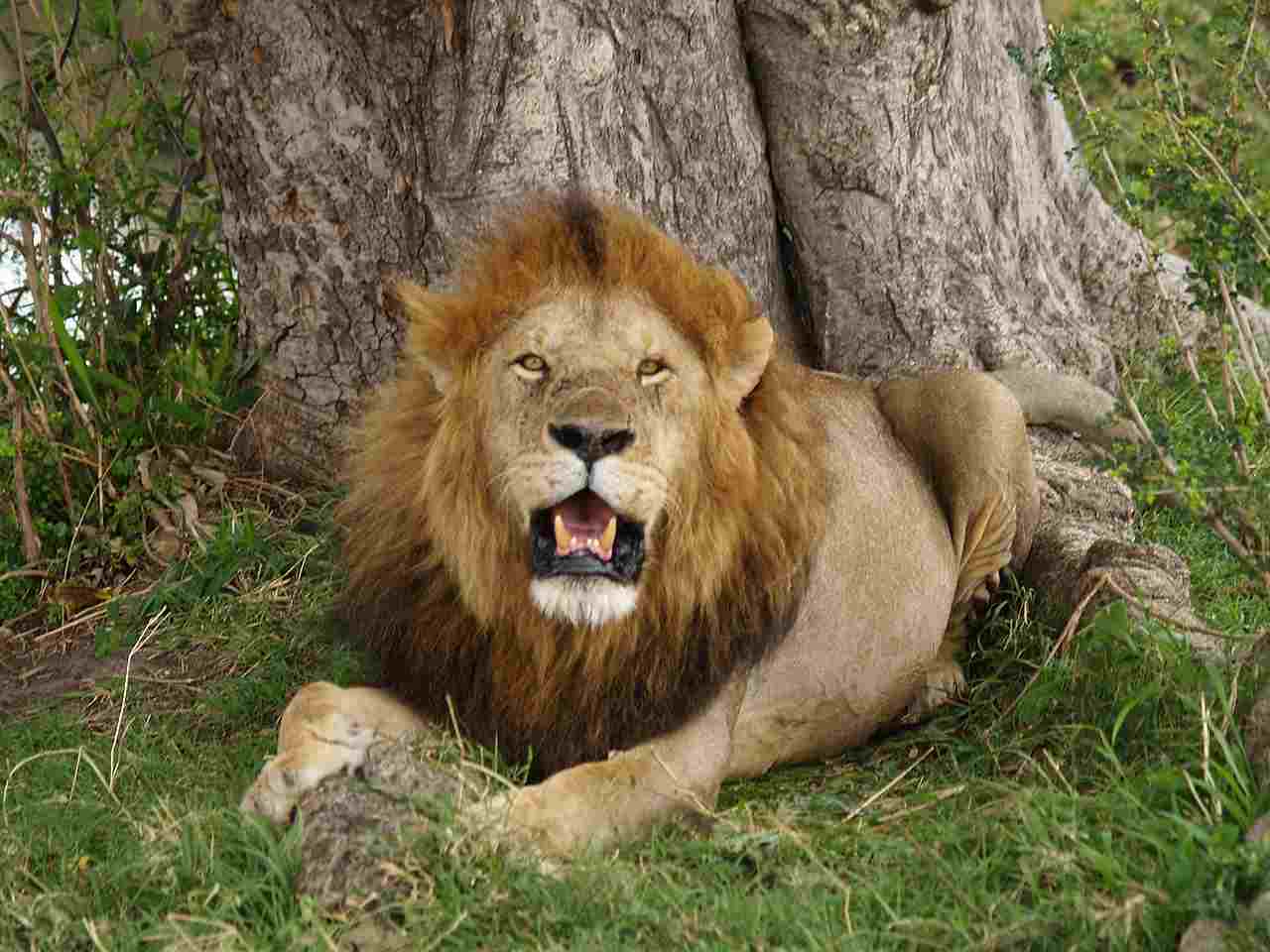
Gorilla:
Gorillas have immense upper body strength, with powerful arms and hands.
Can use their strength for displays, intimidating rivals, and resolving conflicts within their social groups.
Lion:
Lions rely on speed and agility for hunting, using their powerful legs to chase down prey.
Sharp claws and teeth are adapted for capturing and immobilizing prey.
Comparison: Gorillas excel in physical strength, using it for social dominance, while lions are adapted for swift pursuit and capture of prey.
7. Physical Defensive Advantages:
Gorilla:
Gorillas have strong, muscular builds that serve as a deterrent against predators.
Display intimidating behaviors, such as chest-beating, to discourage potential threats.
Lion:
Lions often rely on group defense, with coordinated efforts from the pride.
Sharp claws and powerful roars can discourage potential threats.
Comparison: While gorillas rely on their individual strength and intimidation, lions exhibit collective defense strategies within their pride, leveraging their social structure for protection.
8. Speed:
Gorilla:
Gorillas are not known for great speed; they prefer a more deliberate and powerful movement.
Their primary mode of travel is walking on all fours, known as knuckle-walking.
Lion:
Lions are agile and can reach speeds of up to 50 mph (80 km/h) in short bursts.
Speed is crucial for hunting and capturing prey.
Comparison: Lions are significantly faster than gorillas, reflecting their different hunting strategies and ecological roles.
9. Agility:
Gorilla:
Gorillas exhibit agility in climbing trees, especially when foraging for food.
Despite their size, they can move with surprising nimbleness.
Lion:
Lions display impressive agility, particularly during hunts and when navigating varied terrain.
Their flexible bodies allow for quick and coordinated movements.
Comparison: Both species demonstrate agility, but lions showcase it more prominently in their hunting behaviors, whereas gorillas exhibit agility in their arboreal activities.
10. Overall Physical Capacity:
Gorilla:
Possesses immense strength, adapted for a herbivorous lifestyle and social interactions within their groups.
Well-suited for a terrestrial environment, with robust limbs and a strong build.
Lion:
Balances strength and agility, optimized for predation and hunting in grassland habitats.
Social structure within prides enhances overall adaptability and success.
Comparison: Gorillas excel in raw strength, suited for their herbivorous diet and social interactions, while lions showcase a balance of strength and agility tailored for predatory behaviors and group dynamics.
11. Habitat Preference(s):
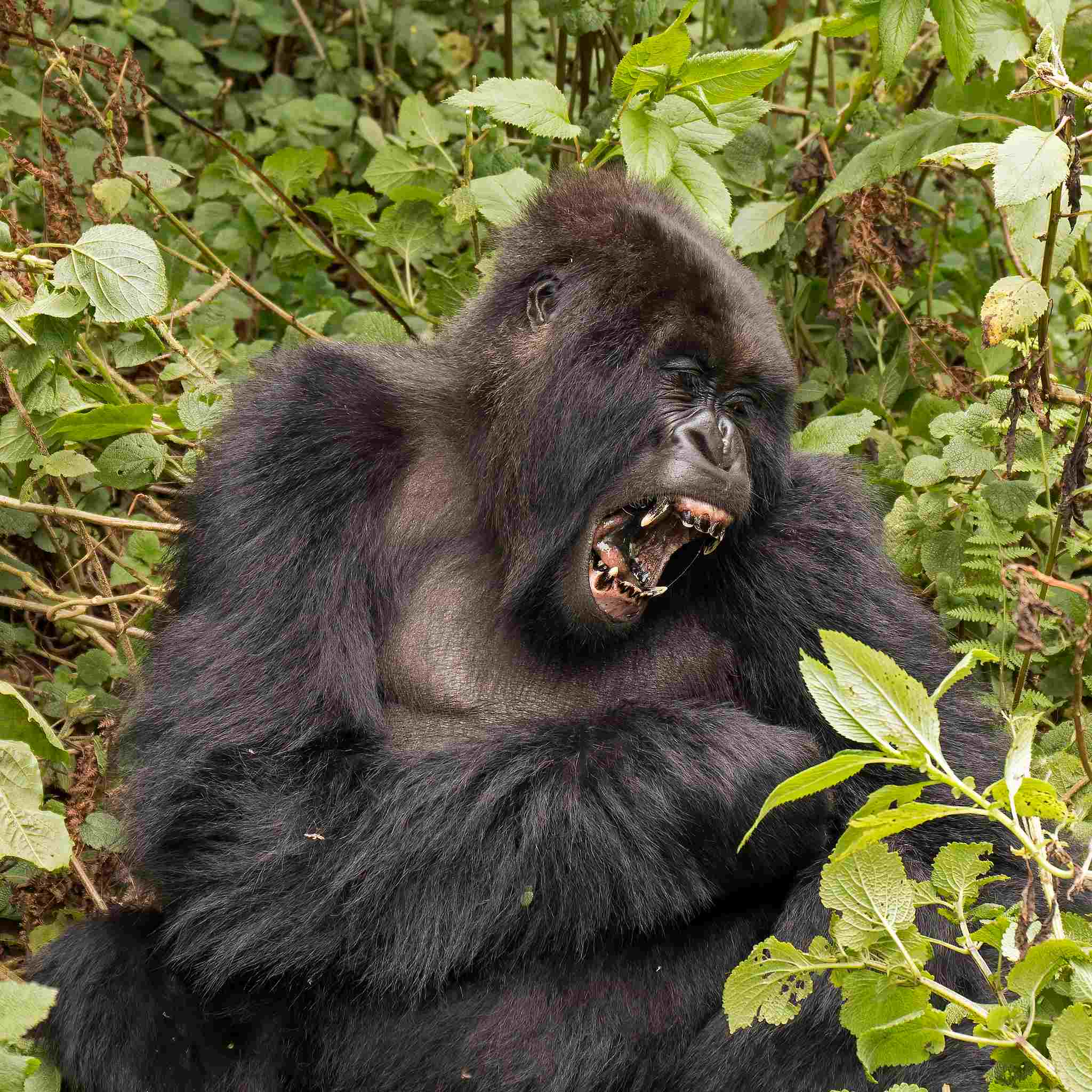
Gorilla:
Primarily inhabit dense, tropical forests and montane areas.
Gorillas are adapted to a terrestrial lifestyle but may climb trees to forage or escape threats.
Lion:
Prefer open grasslands, savannas, and woodlands where they can hunt more effectively.
Lions thrive in areas with a mix of vegetation for cover and open spaces for hunting.
Comparison: Gorillas are associated with forested environments, whereas lions are adapted to more open landscapes, reflecting their distinct ecological niches.
12. Tracks:
Gorilla:
Distinctive tracks with five toes on both hind and forelimbs.
The imprint may show signs of knuckle-walking, distinguishing it from other primates.
Lion:
Paw prints with four toes and retractable claws.
Larger and more rounded than those of domestic cats.
Comparison: The tracks of gorillas and lions differ significantly, reflecting their distinct anatomies and modes of movement.
13. Lifespan:
Gorilla:
In the wild, gorillas can live to be 35-40 years old.
Lifespan may vary based on factors such as habitat, food availability, and threats.
Lion:
In the wild, lions typically have a lifespan of 10-15 years.
Factors like competition, disease, and predation influence their longevity.
Comparison: Gorillas generally have a longer lifespan than lions, with a slower rate of aging, reflecting differences in their life histories and ecological pressures.
14. Mode of Feeding:
Gorilla:
Herbivores with a primarily plant-based diet.
Consume leaves, stems, fruits, and occasionally insects.
Have a specialized digestive system for breaking down fibrous plant material.
Lion:
Carnivores with a diet primarily consisting of meat.
Hunt and consume a variety of prey, including ungulates like wildebeest and zebras.
Depend on their predatory adaptations, such as sharp teeth and claws.
Comparison: Gorillas are herbivores, adapted for processing plant matter, while lions are carnivores, relying on hunting for their sustenance.
15. Social Behavior:
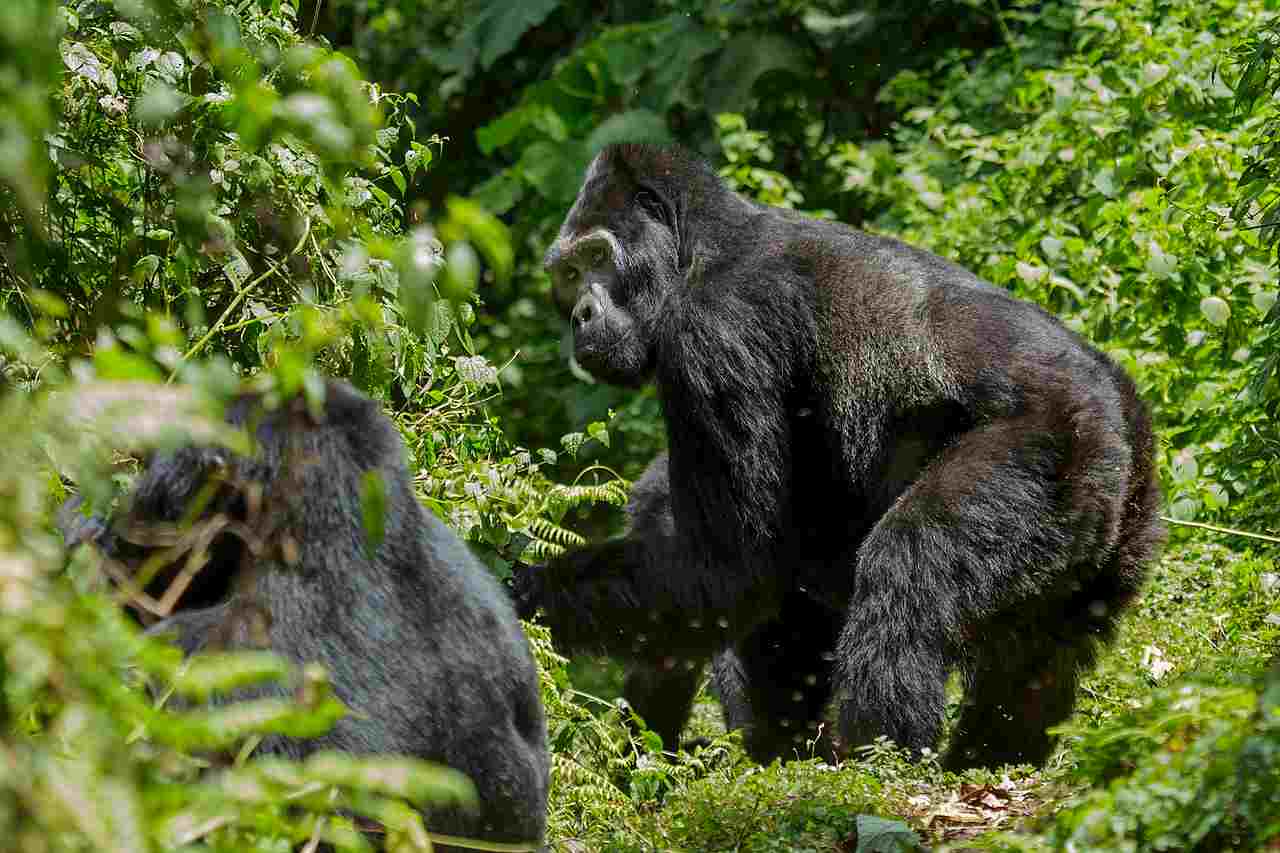
Gorilla:
Live in cohesive social groups called troops or bands.
Groups are led by a dominant male, called a silverback, with multiple females and offspring.
Social structure is crucial for protection and resource access.
Lion:
Form social groups known as prides.
Prides consist of multiple related females, their offspring, and a coalition of males.
Cooperative hunting and protection of territory are key aspects of their social behavior.
Comparison: Both gorillas and lions exhibit complex social structures, but gorilla groups are often smaller, centered around a dominant male, while lion prides involve multiple females and cooperating males.
16. Mode of Reproduction:
Gorilla:
Polygynous mating system where a dominant silverback mates with multiple females.
Females have a relatively long gestation period (around 8.5 months) and give birth to a single infant.
Lion:
Polygynous mating system within prides.
Females synchronize their reproductive cycles, and multiple females may give birth around the same time.
Gestation period is about 3.5 months, and litters usually consist of 2-4 cubs.
Comparison: Both species exhibit polygynous mating systems, but there are differences in gestation periods, birth rates, and parental care strategies between gorillas and lions.
17. Parental Behavior:
Gorilla:
Strong maternal care within the social group.
Mothers are responsible for nursing, protection, and teaching offspring social behaviors.
Dominant silverback provides protection to the entire group, including juveniles.
Lion:
Cooperative parental care within the pride.
Females collectively raise and protect cubs, and males in the coalition contribute to territory defense.
Cubs are nursed by their mothers and receive guidance in hunting and survival skills.
Comparison: While both gorillas and lions exhibit parental care, gorillas rely more on individual maternal care, whereas lions demonstrate cooperative parenting within the pride structure.
18. Proximity to Human-Inhabited Areas:
Gorilla:
Inhabit remote, dense forests and mountainous regions.
Encounters with humans are less frequent but can occur in areas where human activities border their habitats.
Lion:
Lions may inhabit savannas close to human settlements.
Human-wildlife conflict can arise due to the proximity, leading to concerns for both lions and humans.
Comparison: Gorillas typically reside in more remote areas, while lions may share habitats with human communities, increasing the potential for human-wildlife conflicts.
19. Behavior Toward Humans:
Gorilla:
Generally shy and non-aggressive toward humans.
In the wild, gorillas may display defensive behaviors if they feel threatened, such as chest-beating or vocalizations.
Lion:
Wild lions are usually wary of humans but may exhibit curiosity.
Human encounters can be dangerous, especially if lions become habituated to human presence.
Comparison: Both species may exhibit defensive behaviors, but lions, as predators, can pose a greater danger in close encounters with humans. Proper precautions are necessary to avoid conflicts.
20. Danger Posed to Humans:
Gorilla:
Gorillas are generally not considered dangerous to humans.
Wild gorillas may display defensive behaviors if they feel threatened, but attacks on humans are extremely rare.
Lion:
Lions, especially those habituated to human presence, can pose a significant danger.
Wild lions may perceive humans as a threat or potential prey, leading to attacks in certain situations.
Comparison: While both species can display defensive behaviors, lions, as predators, may pose a higher risk to humans, particularly in close encounters.
21. Associated Precautions:
Gorilla:
Observing gorillas in the wild requires respectful distance and adherence to guidelines to avoid disturbing their natural behavior.
Habituation programs for gorilla tourism emphasize minimizing impact on the animals.
Lion:
Caution is essential when encountering lions, especially in the wild.
Safe wildlife viewing practices, such as staying inside vehicles, are crucial to prevent potential conflicts.
Comparison: Precautions around gorillas and lions involve respecting their natural behaviors and maintaining a safe distance, with specific guidelines tailored to each species.
22. Conservation Status:
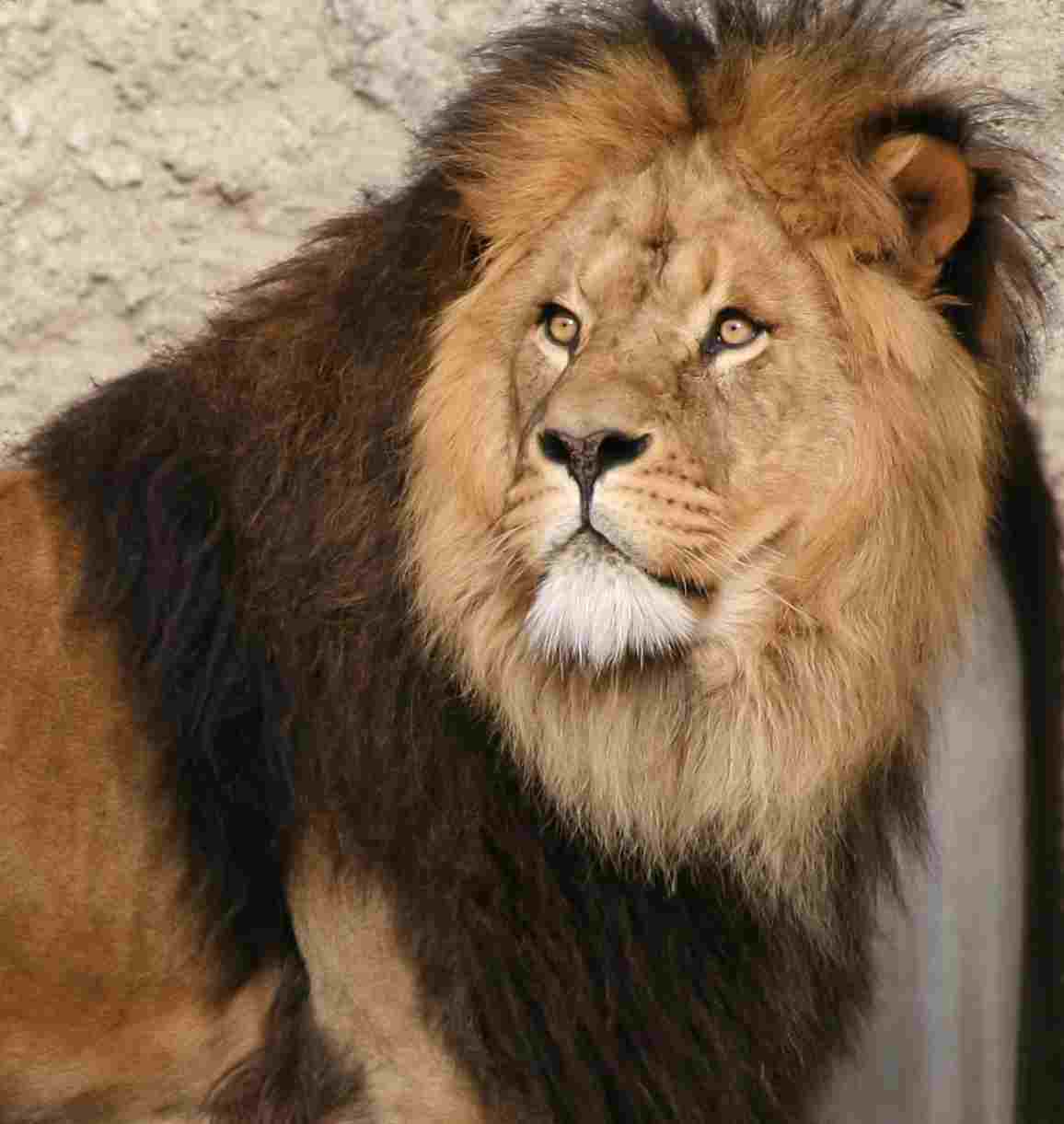
Gorilla:
Varied conservation status across species.
Mountain gorillas (Gorilla beringei beringei) are listed as endangered, while western lowland gorillas (Gorilla gorilla gorilla) are classified as critically endangered.
Lion:
African lions (Panthera leo) are listed as vulnerable.
Conservation efforts focus on addressing habitat loss, human-wildlife conflict, and poaching.
Conclusion
Both gorillas and lions face conservation challenges, and efforts are underway to protect their habitats, mitigate human-wildlife conflicts, and ensure the survival of these species.
I. Similarities:
Despite their distinct evolutionary paths and ecological niches, gorillas and lions share certain similarities:
Social Structures: Both species exhibit complex social structures, living in groups that provide benefits such as protection, cooperative hunting, and communal care for offspring.
Parental Care: Gorillas and lions display forms of parental care, with mothers playing a significant role in nurturing and protecting their young. Cooperative efforts within their social groups contribute to the well-being of offspring.
Ecological Importance: Both species play vital roles in their ecosystems. Gorillas contribute to forest regeneration and plant diversity, while lions help regulate prey populations, influencing the balance of their respective ecosystems.
II. Differences:
Taxonomy and Evolutionary Lineage: Gorillas belong to the hominid family, sharing a closer evolutionary relationship with humans, while lions are felids, more distantly related to domestic cats.
Habitat Preferences: Gorillas favor dense forests and mountainous regions, while lions thrive in open grasslands and savannas. This reflects their ecological adaptations and strategies for survival.
Dietary Habits: Gorillas are herbivores, primarily consuming plant material, while lions are carnivores, relying on hunting for their sustenance. This distinction is evident in their anatomical adaptations and digestive systems.
Mode of Reproduction: Gorillas exhibit a polygynous mating system, with a dominant silverback mating with multiple females. Lions also follow a polygynous system but within prides, with cooperative parenting and synchronized reproduction among females.
Danger Posed to Humans: While both species may exhibit defensive behaviors, lions, as predators, can pose a greater danger to humans, especially in close encounters. Gorillas are generally not considered dangerous, and attacks on humans are extremely rare.
Conservation Status: Gorilla species have varying conservation statuses, with mountain gorillas listed as endangered and western lowland gorillas as critically endangered. African lions are classified as vulnerable, with conservation efforts addressing habitat loss and human-wildlife conflict.
